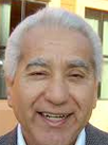In Yucca Valley, a bastion of political conservatism where limited-government sentiment predominates, the ascendant ideology has created a circumstance in which the state is now threatening action that in the words of the town’s former mayor and current state Assemblyman Paul Cook could transform Yucca Valley into a “ghost town.”
The town’s burgeoning population has created and accelerated the need for the construction of a wastewater treatment system and a demand by state regulators that locals build it. In reaction to what they perceive as heavy-handed government intrusion into their affairs, local voters have consistently elected leaders who have either outright defied or simply ignored the regulators, while consistently instituting policies that have delayed or obstructed the provision of the infrastructure.
The delays, in turn, are escalating the eventual cost of providing the infrastructure, lessening the likelihood that once the grudge match with the state is resolved, local residents will be able to bear the cost of the infrastructure.
Long a remote and rustic desert area that attracted those wishing to remain well off the beaten track, a major development in Yucca Valley’s evolution toward becoming a larger community was Norman J. Essig’s effort beginning in the 1950s to establish it as both a getaway to and private residency for entertainment celebrities. He ventured capital toward that end, acquiring hundreds of acres, which he improved with roads around the region’s major arterial, Highway 62, which is also known as Twentynine Palms Highway.
While attracting movie stars as well as recording and visual artists was only marginally successful, the improvements did succeed in luring others by virtue of the relatively inexpensive land prices, and Yucca Valley grew sporadically over the years, appealing to the independent minded and lovers of the remote desert beauty.
In November 1991, the town incorporated, becoming the 24th and last municipality in San Bernardino County to do so.
City officials, embodying the values of their constituents, eschewed big government and excessive regulation. Many town roads remain unpaved to this day. Other citified amenities such as wastewater treatment, are non-existent. When elements of the populace’s libertarian values clashed with popular sentiment such as the desire of some residents to maintain the town’s rural character and prevent urbanization, the issue was resolved by providing developers with carte blanche to build aggressively without incorporating urban land use standards.
The town did not undertake the construction of a municipal sewer system. Instead, the septic systems that had proliferated in Yucca Valley for a half-century remained a constant accoutrement of homes and businesses built within the 40 square mile city limits.
Ten years after incorporation Yucca Valley’s officials were notified by the state’s Regional Water Quality Control Board that the lack of a sewage treatment system had resulted in nitrates accumulating in the water table. Simultaneously, the Hi-Desert Water District, which serves the Yucca Valley community, experienced nitrate traces in district wells.
Local officialdom did not respond with alacrity. Rather some feigned outrage that the state felt it necessary to involve itself in what many perceived as a local issue. As a good number of those who had moved to Yucca Valley were senior citizens and retirees living on fixed incomes who had been attracted to the area by cheap land, they were alarmed by the concept of having to defray the cost for the installation of a sewer system. They were heartened and to a certain extent lulled into a state of complacency by their political leadership, which asserted the town would not fall victim to overreaching regulation imposed on it by Sacramento. Thus, the water table contamination issue was kicked down the road.
By 2010, Yucca Valley’s population had zoomed to 20,700, an increase of 3,835 or 22.7 percent over the 16,865 town residents counted in the 2000 Census.
In the previous decade, monitoring carried out by the California Regional Water Quality Control Board and the United States Geological survey demonstrated that residues left in the ground that seep into the aquifer had risen to levels that presaged health threats if the matter was not addressed. Those contaminants included nitrates and other pollutants including pharmaceuticals and salts. Water levels are deep enough to have delayed the need for a wastewater treatment system.
In an effort to reverse severe declines in water tables resulting from limited recharge from rainfall, the water district began importation of state aqueduct water into Yucca Valley, which in turn caused notice of the contamination. Whereas historic pumping increases from the 1940s to 1995 resulted in the water levels dropping faster than the nitrates from septic systems seeped downward, with the completion of the Morongo Basin Pipeline project and the accompanying completion and activation of recharge basins in Yucca Valley, the Hi-Desert Water District began to percolate water into the aquifer and the water table began to rise. That water came in contact with the high levels of nitrates left over from decades of septic discharge and the nitrates found their way into some of the Hi-Desert Water District’s wells. This triggered a scaling back of the Hi-Desert Water District’s recharge efforts, and the goal of reestablishing the Yucca Valley water table to the natural level present in the 1940s has not been achieved.
The imported water has actually diluted the nitrates so water tests now show nitrate levels below the maximum contaminant level allowed by the state and the U.S. Environmental Protection Agency.
In the meantime, the discharge of septic waste continues and the United States Geological Survey determined that nitrates accumulating beneath Yucca Valley are present in ever increasing concentrations and at depths that pose a threat to the groundwater, including a calculation that 880 acre-feet of septic discharge currently reaches the groundwater every year.
In 2007, the California Regional Water Quality Control Board, the state agency responsible for protecting water quality, adopted a resolution identifying the town of Yucca Valley as one of 66 communities throughout the state with groundwater threatened by the continuing overuse of septic systems. The board further declared Yucca Valley as a top priority for eliminating the use of septic systems, meaning Yucca Valley’s is one of the five most seriously threatened water supplies in the state.
Nevertheless, local officials resisted taking immediate action and refused to impose any kind of building or development moratorium that would stabilize the problem. While suspending any action at least five years into the future, the town of Yucca Valley forged a Memorandum of Agreement with the Regional Water Quality Control Board and the Hi-Desert Water District to allow interim permits for new septic systems while planning for a wastewater system proceeds. The city was not able, however to stave off state-imposed septic discharge prohibitions due to be triggered as of May 19, 2016. Under that mandate, phase 1 of a wastewater system must be completed or significantly on its way to completion by that date or the state will initiate enforcement action. The first phase of the project is to cover the downtown area of Yucca Valley, the area most proximate to the heart of the groundwater basin. Similarly, phase 2 must be completed or nearly completed by May 19, 2019 and phase 3 must be completed by May 19, 2022. The last two phases lie further out where future concentrated development is most likely to occur.
Currently, finding funding remains the main focus as grants and low interest loans are sought. The Hi-Desert Water Agency, which is to undertake the project, is seeking to lead the community into an acceptance of the sewer system. The town of Yucca Valley, while evaluating for the water district various funding options for the project, in keeping with the laissez faire, minimal-governmental-interference philosophy that has traditionally been the platform of its elected leadership, until very recently has stayed at arm’s length from the matter.
Indeed, Yucca Valley’s leading citizen, Paul Cook, who served on the Yucca Valley City Council for eight years, from 1998 until 2006, and is now serving in the California Assembly and is one of two candidates who has qualified for a run-off in the newly drawn 8th Congressional District, more than any single political entity has prevented the wastewater project from moving ahead. As the region’s representative in Sacramento, Cook effectively undercut the project’s proponents, referring to the demand that Yucca Valley transition from septic systems to a sewer system as “just another unfunded state mandate.” He has dwelled at length upon the cost of the project and what he considers his constituents’ inability to bear that cost.
“We have to look at this from some perspective of a cost analysis,” Cook said. “This is never going to happen. We have to remember what type of community this is. We got to be very, very careful when we start talking $125 million to people who cannot afford it because we do not have the businesses and the state’s not going to give you the money. I’m not afraid to talk to Governor [Jerry] Brown. I work for you and we’re not afraid to get a bloody nose.” Cook bragged he would tell Brown, “In Yucca Valley, we want you to declare Yucca Valley a historical site because we’re going to be a ghost town!”
More recently, Cook has acknowledged that building the sewer system is a desirable goal, but still maintains that the state is overstepping its authority by requiring that it be built on the local dime.
“When a state bureaucracy imposes a septic tank prohibition, sets a 2016 deadline, and doesn’t offer funding to deliver the project, it is without question an unfunded mandate,” Cook said. “It is imperative that the California Water Resources Control Board provide Yucca Valley residents and businesses access to extended term, reduced interest rate loans along with debt forgiveness. Additionally, every Proposition 84 dollar appropriated to our region needs to be made available to the Hi-Desert Water District to help deliver the lowest cost sewer system to our community. While protecting water quality is a laudable goal, the costs associated with constructing a sewer and wastewater treatment plant could have a potentially devastating impact on Yucca Valley without these resources.”
Chad Mayes, the youthful mayor of Yucca Valley who championed limited government throughout his tenure in office before he resigned to become chief of staff to San Bernardino County Supervisor Janice Rutherford in 2010, was similarly opposed to imposing the intrusion and expense of creating a sewer system on the town’s residents, businesses and landowners.
Mayes’ father, the Reverend Roger Mayes, is a member of the Hi-Desert Water District Board of Directors, and a longtime advocate of limited government.
With the May 19, 2016 deadline looming, one community institution – the Hi-Desert Water District – is pushing for a transformation in the way things are handled.
Jennifer Cusack, the spokeswoman for the district, sounded an alarm about further inaction. “There is a state prohibition on the discharge from septic system as adopted by the California Regional Water Quality Control Board,” Cusack said. “There are three ways for people to comply. We can build the sewer system or they can seal off their system and pump it or they can build their own package treatment facility.”
Only the first of those three approaches has practical viability for the entire town population, she said.
“This is the solution we believe will be best for community,” Cusack said, explaining, “We have so many in the community using septic systems that we have saturated the ground with nitrates. The United States Geological Survey has studied it for a decade-and-a-half and confirmed the nitrate concentrations are from the septic systems. Right now the water we are delivering to our customers is safe, thanks to the high quality water from the Morongo pipeline.”
But recharging the aquifer with the imported water is limited due to the nitrate concentrations existing in the soil, Cusack said.
“We cannot continue to use septic systems as water moves nitrates further into the ground,” she said.
Cusack said the water district has done much of the preparatory work for the wastewater system. “In fact, our plans for a wastewater treatment system are well under way. We have done all of the environmental studies. We have clearance though the California Environmental Quality Act and National Environmental Protection Act. We have surveyed and mapped the project’s phase one and are ready to go. The collection system, consisting of over 400,000 linear feet of pipe, is the largest part of the project. It will be the most time-consuming and expensive component of phase 1 of the project. Phase 1 will protect all of the groundwater at the base of the valley. By the end of this summer we will begin the design for the collection system and it will have been paid for entirely by grants.”
Cusack acknowledged “Financing is a huge issue. There are significant costs. A high percentage of our population are retired seniors living mostly on fixed incomes who came here to live because it is an inexpensive place to retire. We have to be sensitive to that. We are seeking low interest funding though state revolving funds. We have applied for a low to no-interest loan through the state revolving fund and continue to aggressively seek grants. We have a significant need financially and have a $20 million authorization from the Bureau of Reclamation, which will help. We are still going to need a component that comes from the residents. The question we need to answer is ‘What is the affordability threshold?’ We need to find out what the typical household in our community can afford. We believe a majority of people understand this issue and would be willing to pay between $20 and $40 per month.”
The $125 million cost of the project could be defrayed over 30 years, Cusack said, and the debt servicing would involve loans satisfied by assessments on property owners. “Public agencies can form assessment districts,” she said.
Previous figures, which Cusack now says are dated, put each parcel’s share in the debt burden at $16,700.
“We do not have new figures, yet,” Cusack said. “We would form the assessment district to lien the properties to get a loan though state revolving funds. The assessment district would become the securing mechanism. The lien would be passed on to the next homeowner when the home is sold. We would not need to be paid until a year after construction is complete, 2017 or later.”
The formation of the assessment district would be made, Cusack said, through a mail ballot sent to the town’s property owners. A simple majority vote approving the district would result in its formation.
As of three months ago, however, there did not appear to be majority support for the assessment district’s formation. At the water district’s behest, BW Research carried out a telephone survey of property owners to measure their willingness to support an assessment of $15,000 to construct the sewer system. Thirty-two percent of respondents said they would vote in favor of the assessment district’s formation. Sixty-eight percent said they could not afford the current cost estimate.
Nevertheless, Cusack said Yucca Valley residents understand the need for the project. She said lowering the cost remains the key factor. She cited the previous approval of the Morongo Basin Pipeline Project as an indicator of the local population’s willingness to invest in necessary infrastructure when doing so is in the collective interest. She said that if the property owners have the facts they will make an informed decision.
One method of education is to let Yucca Valley’s residents know what will befall them if the system is not built. An illustration of that peril consists of the experience of Los Osos, California, which was under a similar order from the California Water Resources Board and failed to heed it.
“The goal is to protect our groundwater on our own and not have the state enforce its order,” Cusack said. “Los Osos became subject to an enforcement phase, which involved cease and desist orders, and that community is now building a wastewater system at a greater cost than originally planned. Enforcement is done in a lottery fashion, selecting random property owners to receive cease and desist orders with the potential of daily fines for non-compliance. They are ordered to then discontinue the discharge from their septic system, seal it off and pump it regularly. If they do not, they levy fines which can amount to up to $5,000 per day and they start by sending request letters for the homeowners to stop discharging from their septic systems. What they try to do is motivate them through their authority to solve the problem.”
Cusack admitted that there are still “some” members of the Yucca Valley community who do not believe a sewer system is needed.
“Distrust of government has created a situation where people do not realize they are hurting themselves,” she said. “We are hoping our community can educate themselves and learn we can do ourselves more harm than good by fighting this. It is true that this is a conservative community. People out here like to be left alone. But our community is able to solve problems once people understand we have problems that need to be solved. As priorities go, this is very important. People for the most part do understand that septic systems pollute the environment. Without safe water Yucca Valley will be a less attractive place to be. It is a fantastic place to live.”
Cusack said the community cannot afford to temporize.
“We have limited time to educate the property owners of the situation we are dealing with and get the cost low enough so it is affordable,” Cusack said. Initiating the effort now makes sense, she said, because “of the competitive construction market. The sooner we move the better. We need money to construct the project. The assessment district is the security mechanism needed to obtain the financing.”
And lead time is required on a project of this size, Cusack emphasized. “Delays beyond an 18-to-24 month design process could result in increased costs as construction costs rise,” she said. “If we cannot get the financing by the time the design is complete, a delay in construction would be necessary and the project may not be completed by May 19, 2016. That is not a hard line date, but if we do nothing, it could lead to an enforcement phase of the regional board’s prohibition on the discharge from septic systems. The bottom line is we need to protect our groundwater.”
Yucca Valley Town Manager Mark Nuami told the Sentinel, “The town of Yucca Valley is working together with the Hi-Desert Water District in their efforts to deliver an efficient and low cost sewer system. We are pursuing grants and state funding to upgrade our local sewer systems.”
Revenue sources for the project are likely to prove elusive, Nuami said.
“State budget deficits are anticipated for years to come,” he said. “Given the legal nature of the state sewer mandate and the potential for large fines, it is our responsibility to find a solution that will create certainty, keep costs low and protect property values. We can’t continue to put this issue off to the future. A centralized sewer system is long overdue.”
Nuami concluded, “The town and Hi-Desert Water District are working together to identify funding solutions that will significantly lower the costs of the state-mandated sewer system improvements for local taxpayers.”






